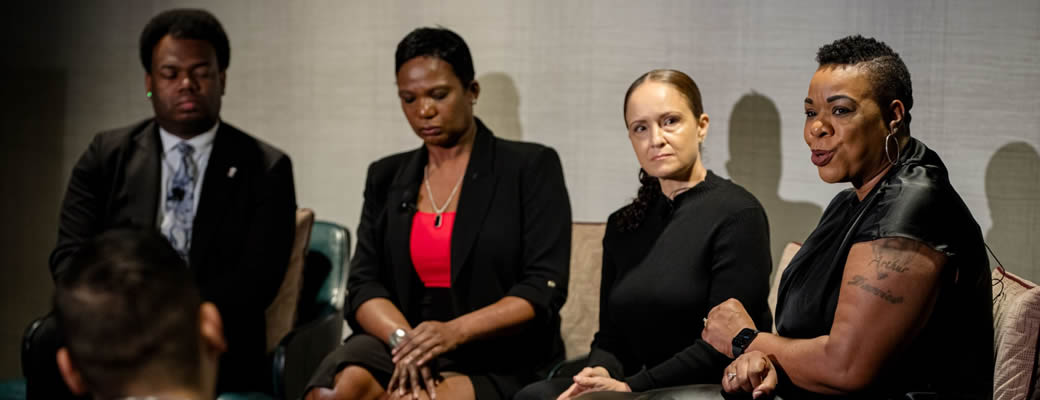Missing people of color ‘shunned’ by the media, advocates say
National Press Foundation
Kevin Johnson
January 29, 2024
The media has long highlighted cases involving missing white Americans, yet nearly 40% of the nation’s missing are people of color.
Black & Missing Foundation co-founders Derrica Wilson and Natalie Wilson said a collective desensitization to such cases, based on damaging stereotypes associating minoritized communities to criminal activity and poverty, have kept the plight of Black and other victims of color out of the public eye.
“We have been fighting an uphill battle,” Natalie Wilson told journalists at the Crime Coverage Summit hosted by the Radio Television Digital News Association and the National Press Foundation. “It has gotten better, but we are being shunned by the media, too. We are met with silence when we reach out to media outlets for coverage. We want our missing to be household names, too.
“And that’s what we are trying to change because these are our mothers, our fathers, our children that are disappearing at an alarming rate and we need to bring them home or to provide much needed answers for their families.”
Josh Mankiewicz, a correspondent for NBC’s Dateline whose work helped the foundation gain prominence, acknowledged that media attention had long bypassed missing people of color.
“We were trying to cover every missing white woman, but we weren’t covering really anybody else,” Mankiewicz said. “Most of the missing people in the FBI’s database of missing persons are men and huge percentage are people of color, much larger than the population at large.”
Rebkah Howard, the foundation’s chairperson, said the issue became personal when her niece, Tamika Huston, went missing in 2004. Her disappearance was reported shortly after national news organizations had closely chronicled the cases of white women Laci Peterson, a California woman later determined to have been murdered by her husband; and Chandra Levy, a Washington, D.C., government intern whose remains were found in a local park.
“You felt terrible for the families,” Howard said. “And when my niece went missing, as a publicist I thought, well certainly I have the skills, the resources, the contacts. I know how to pitch a story. I know who to call, I know how to do it… And I was met with silence, and I was stunned. And this was months. So, Tamika was missing for 15 months before we had a resolution.”
A Spartanburg, S.C., man was ultimately convicted in Tamika Huston’s murder.
Huston’s case continued to languish even as media organizations seized on the 2004 disappearance of another white woman, Lori Hacking, in Utah.
“I knew at the time that every single producer that was putting this on air, every reporter had to have already heard from me,” Howard said. “And again, I was like what is it about Tamika that makes her less compelling, less deserving? Why is there less empathy for my situation, Tamika’s situation, my sister, Tamika’s mother? Why is there less empathy? Why is no one listening to me?”
Jonathan Franklin, a correspondent at National Public Radio and 2022 NPF Paul Miller Washington Reporting fellow, said newsroom managers sometimes have to be reminded of the lack of equity in such reporting.
“Having those sorts of conversations with management in local newsrooms is what I think would be the pushback in a sense, because they oftentimes don’t see the timeliness or why this is important for reporters to chase a story,” Franklin said.
Access the full transcript here.
Photo credit: BP Miller/Chorus Photography

